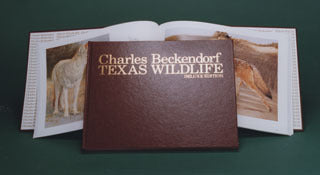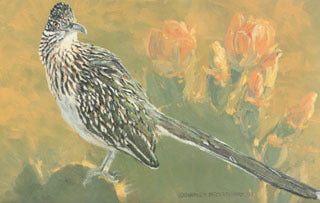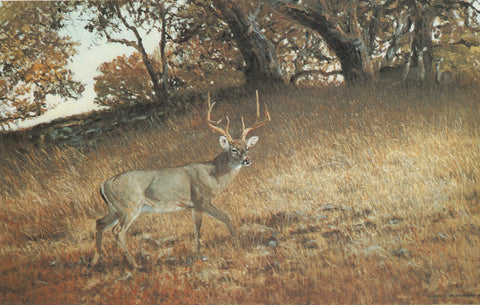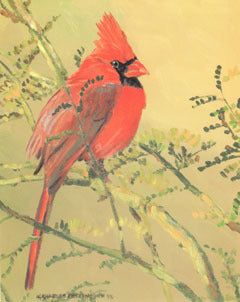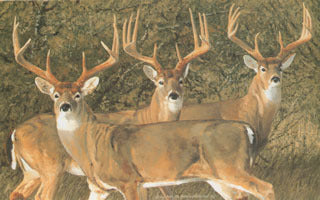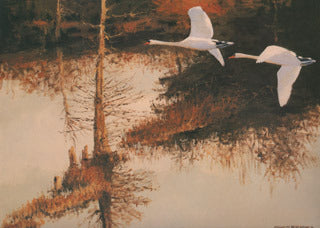
H-57 Swans Flying
Color Reproduction | By Charles Beckendorf
Additional Information
The mute swan was introduced into the U.S. in the mid-1800's to grace the ponds of estates and parks. Many escaped, and today thousands of mute swans are living wild and are increasing in number. It is the most likely swan to be seen in Texas. This swan holds its neck in a graceful curve and often swims with its wings held sail-like over its back.
All white swans look so much alike and have such similar habits, identification must be made at close range. The tundra has a small yellow spot at the base of its bill; the trumpeter has a solid black bill; the trumpeter has a solid black bill; and the mute swan has an orange bill with a black knob.
This image is from the Charles Beckendorf Texas Wildlife book. The original was an acrylic painting on canvas (1992) and the size is approximately 14 X 11 inches. The total edition size of this print is 500.
This is a part of the Texas Wildlife Art Prints Collection.
Color Reproduction
The mute swan was introduced into the U.S. in the mid-1800's to grace the ponds of estates and parks. Many escaped, and today thousands of mute swans are living wild and are increasing in number. It is the most likely swan to be seen in Texas. This swan holds its neck in a graceful curve and often swims with its wings held sail-like over its back.
All white swans look so much alike and have such similar habits, identification must be made at close range. The tundra has a small yellow spot at the base of its bill; the trumpeter has a solid black bill; the trumpeter has a solid black bill; and the mute swan has an orange bill with a black knob.
This image is from the Charles Beckendorf Texas Wildlife book. The original was an acrylic painting on canvas (1992) and the size is approximately 14 X 11 inches. The total edition size of this print is 500.
This is a part of the Texas Wildlife Art Prints Collection.
Beckendorf color reproductions are developed using four color process printing on fine white paper. This advanced technique utilizes separate color plates for each of the primary colors, plus black. High-resolution digital scans and special process inks are utilized to yield beautiful, accurate reproductions.
About the Artist - Charles Beckendorf
Charles grew up in Mathis, Texas, where he had the opportunity to spend hours on large ranches. Generous land owners gave him permission to wander freely over their ranches and he observed creatures in their natural surroundings. He developed a lifelong love of nature, whether it be in the tiniest of flowers or the largest of animals. It was at this time that he became a true naturalist.
We Also Recommend
REVIEWS

